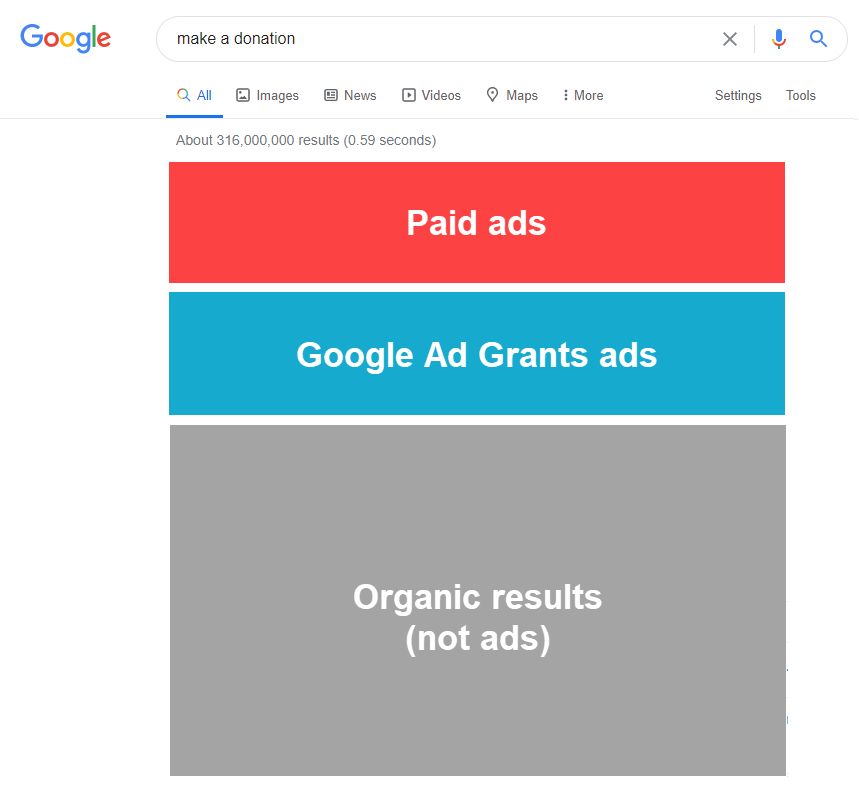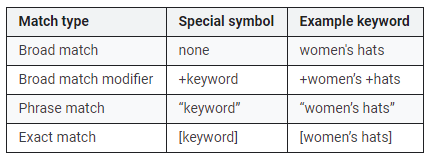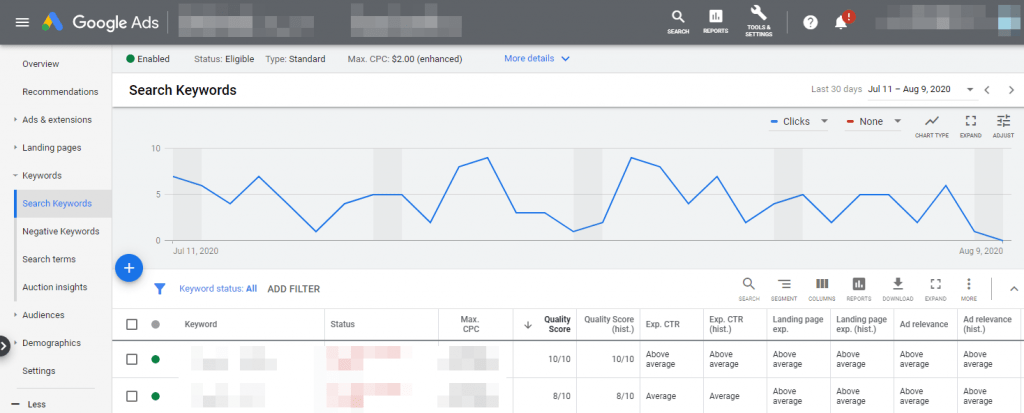3.1. Where your ads are displayed
Google Ad Grants ads (free for nonprofits) are shown only in Google search results.
If you open a normal Google Ads account (paid account) you have many other options to advertise that are not included in Google Ad Grants (Display, Youtube, Gmail, remarketing…).
Google Ad Grants ads always show under paid account ads (if there are any).

This is why Google Ad Grants does not give good results for searches with many paid competitors. This usually happens in commercial searches, but also in certain searches for which there are nonprofits willing to pay ads (because they have a lot of value for them, such as ”make donation nonprofit“). for example).
3.2. Keywords
By ”keywords” we mean the words or phrases that users search for on Google and in which you can choose to display your ads.
You can choose to show your ads only when the search is exactly the keyword that interests you or also in similar searches. That’s keyword matching, which is pretty well explained in this article and this video.

In general we recommend using the modified broad match (+keyword), as it’s a good balance between visibility and control.
You can also test different matches at the same time in the same ad group and evaluate which ones give you better results in each case.
In Google Ad Grants, it’s not allowed to use keywords composed of 1 word only (example ”turtle”), with some exceptions.
3.3. Auction system and the importance of the Quality Score
Google Ads works like an auction. The advertiser who bids more (who is willing to pay more for each click received), appears first. If you’re not among the advertisers bidding the most for that particular search, your ad doesn’t appear.
However, Google not only takes into account how much you are willing to bid, but also the quality of your campaigns. If your ads and landing pages are bad, Google will penalize you (assign a low Quality Score). This will reduce the visibility of your ads and/or increase your costs.
The following video explains the bidding and ranking system:
In 99% of Google Ad Grants campaigns, it’s best to choose an automated bidding system (usually ”Maximize conversions” or ”Maximize conversion value”), so Google system automatically decides the bid amount.
Therefore, in Google Ad Grants it’s especially important to improve the other part of the equation: Optimize the Quality Score as much as possible.
The Quality Score of each keyword and the variables that influence it (expected CTR, ad relevance and landing page experience) can be seen in Google Ads reports:

If your Quality Score is high, your ads will appear before the ads of other nonprofits and/or you will pay less for each click than they do.
If your Quality Score is low and you have many strong competitors, you may not even get your ads to show (because other nonprofits will be bidding with the same system as you, but with higher Quality Scores).
Google Ad Grants requires having a Quality Score of 3 or more in all keywords (your account will be deactivated if you keep keywords with Quality Score 1 or 2 active). But you should not settle for having a 3, the ideal is to have a Quality Score as high as possible.
3.4. Campaign structure
Google Ads is divided into 3 levels:
- Campaigns: Here you decide which locations do you want to target and what budget you want to assign for each campaign, among other things. Unless you are spending the entire Google Ad Grants budget ($10,000/month = $329/day) you should simply put $329 or more as the daily budget for each campaign.
- Ad groups: Here you decide which keywords will activate your ads, among other things. The ideal is to create many groups, each with few keywords inside. This way you can create more specific ads (that target keywords related to a very specific topic).
- Ads: Here you create the ads you want to show in Google searches. You should be constantly testing new ads (different texts, formats and extensions). Google will show more frequently the ones that give better results.

Campaigns can be divided by country, by topic or by what best suits your organization’s goals.
For example, for a Spanish organization that gives microcredits to entrepreneurs in Ecuador, it could be interesting to create different campaigns for Spain and Ecuador. Maybe also have different ad groups in each country, if you have different targets or audiences in each area:

3.5. Metrics
A widespread error in nonprofits is that they become ”obsessed” with spending as much as possible of the budget granted by Google Ad Grants.
This should not be the priority at all, as you may be spending the entire budget and not achieving the goals of the organization.
The priority must be to achieve the maximum possible number of conversions. Or, better yet, maximize the total value of conversions (if we have assigned a value in $ to each conversion).
Therefore, the most important metric in Google Ads is ”Conversions” (or ”Conversion Value” if we have given values)
Other important metrics are:
- Quality Score. Already explained in point 3.3.
- CTR. It’s important for the calculation of the Quality Score and because Google Ad Grants requires a minimum of 5% on average (if you fall below that figure, they will deactivate your account).
- Total cost. We should check it to know if we are spending all the budget ($329/day) or spending very little (less than $50/day). In both cases, we should probably make significant changes to the account.
